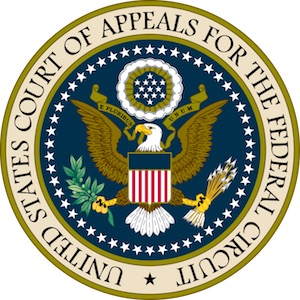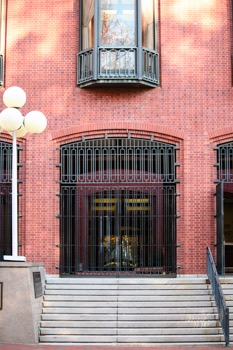Software Patentability 2017
Today, most computer innovations relate to software, at least in some important ways, and the USPTO continues to issue at least some patents for software-related inventions. No one seriously believes software will become patent ineligible per se, although it is undeniable that there is now a much steeper hill to climb than there once was. The trick is to define the invention as providing a technological solution to a technological problem. See A Guide to Software Patents and Software Patent Eligibility at the Federal Circuit.
For now, there has been no definitive statement by the Supreme Court that software is, in fact, patent eligible, although the Court has recognized at least some software-related innovation as being patent eligible. See Diamond v. Diehr. The Supreme Court also continues to consider the invention at issue in State Street Bank to be patent eligible, even if the “useful, concrete and tangible result” test does not live on.
Deciphering TLI Communications and FairWarning IP
Beginning in May 2016 with the Federal Court’s decision in Enfish, carrying over into the July decision in BASCOM, and then into the Court’s Fall decision in McRO (sometimes referred to as “the Blue Planet case”), the patent stakeholder community finally started receiving some much-needed guidance with respect to patent eligibility of computer-implemented inventions.
While decisions where claims have been ruled patent eligible have been helpful, decisions finding claims patent ineligible have been at least as informative, at least from a patent drafting standpoint. Indeed, as important as the aforementioned pro-patent-eligible decisions are two decisions where the Federal Circuit found the claims to be patent ineligible. In TLI Communications and then more recently in FairWarning IP, LLC v. Iatric Systems, Inc., the Federal Circuit distinguished the claims at hand from those that have been held patent eligible, which help identifies brighter lines and nuances of software practice.
12.22.16 | Federal Circuit Cases, Patent Issues, posts, software patents | Gene Quinn
Federal Circuit says automating 3D-animation method is patent eligible
 The Federal Circuit recently issued a decision in McRo, Inc. v. Bandai Namco Games America, which found that the software patent claims at issue were not directed to an abstract idea and were patent eligible.
The Federal Circuit recently issued a decision in McRo, Inc. v. Bandai Namco Games America, which found that the software patent claims at issue were not directed to an abstract idea and were patent eligible.
The patents in question related to automating a part of a 3D-animation method. Essentially, the patents cover lip synchronization of animated characters so that the lips of the animated character move in a normal fashion to the point where the animated character’s lips can be read.
After going through a two-plus page recitation of the law, Judge Reyna summarized the district court holding, that the claims were drawn to an abstract idea of automating rules-based use of morph targets and delta sets for lip synchronization in 3D animation. Reyna explained that the Federal Circuit disagreed with that determination, reminding the district court that they have cautioned courts to carefully “avoid oversimplifying the claims.” Reyna would go on to say that these claims are specifically “limited to rules with specific characteristics.”
09.27.16 | Federal Circuit Cases, Patent Issues, posts, section 101, software patents | Gene Quinn
Federal Circuit finds another software patent claim eligible
 Recently, the United States Court of Appeals for the Federal Circuit issued a decision in BASCOM Global Internet Services, Inc. v. AT&T Mobility LLC. Writing the opinion for the majority was Judge Raymond Chen, who also authored the Court’s decision in DDR Holdings, which is one of the few cases to similarly find software patent claims to be patent eligible. Joining Chen on the panel were Judges O’Malley and Newman, with Judge Newman concurring and writing separately.
Recently, the United States Court of Appeals for the Federal Circuit issued a decision in BASCOM Global Internet Services, Inc. v. AT&T Mobility LLC. Writing the opinion for the majority was Judge Raymond Chen, who also authored the Court’s decision in DDR Holdings, which is one of the few cases to similarly find software patent claims to be patent eligible. Joining Chen on the panel were Judges O’Malley and Newman, with Judge Newman concurring and writing separately.
In this case, the Federal Circuit agreed with the district court that the filtering of content is an abstract idea because “it is a long-standing, well-known method of organizing human behavior, similar to concepts previously found to be abstract.” However, the Federal Circuit ruled that the claims did add significantly more and, therefore, the claims are patent eligible.
07.29.16 | patent eligibility, Patent Issues, software patents | Gene Quinn
Federal Circuit finds data storage software claims patent eligible
 Several weeks ago, the United States Court of Appeals for the Federal Circuit shook up the patent world with a somewhat unexpected gift for patent owners, particularly patent owners and applicants seeking software patents. The Court issued an important decision on software patent eligibility in Enfish LLC v. Microsoft.
Several weeks ago, the United States Court of Appeals for the Federal Circuit shook up the patent world with a somewhat unexpected gift for patent owners, particularly patent owners and applicants seeking software patents. The Court issued an important decision on software patent eligibility in Enfish LLC v. Microsoft.
The opinion by Judge Hughes, who was joined by Judge Moore and Judge Taranto, doubles the total of Federal Circuit decisions where claims in a software patent were deemed to be patent eligible because they are not abstract. In other words, DDR Holdings is no longer the only point of hope for innovators and patent owners in the software space.
This case stared when Enfish sued Microsoft for patent infringement. The patents at issue were U.S. Patent No. 6,151,604 and U.S. Patent No. 6,163,775, both issued in late 2000 and both claiming priority to the same application filed in March 1995. The ’604 and ’775 patents are directed to an innovative logical model for a computer database. A logical model is a model of data for a computer database explaining how the various elements of information are related to one another. Contrary to conventional logical models, the patented logical model includes all data entities in a single table, with column definitions provided by rows in that same table. The patents describe this as the “self-referential” property of the database.
06.3.16 | CAFC, Patent Issues, section 101, software patents | Gene Quinn


No Comments
02.24.17 | patent eligibility, section 101, software patents | Gene Quinn